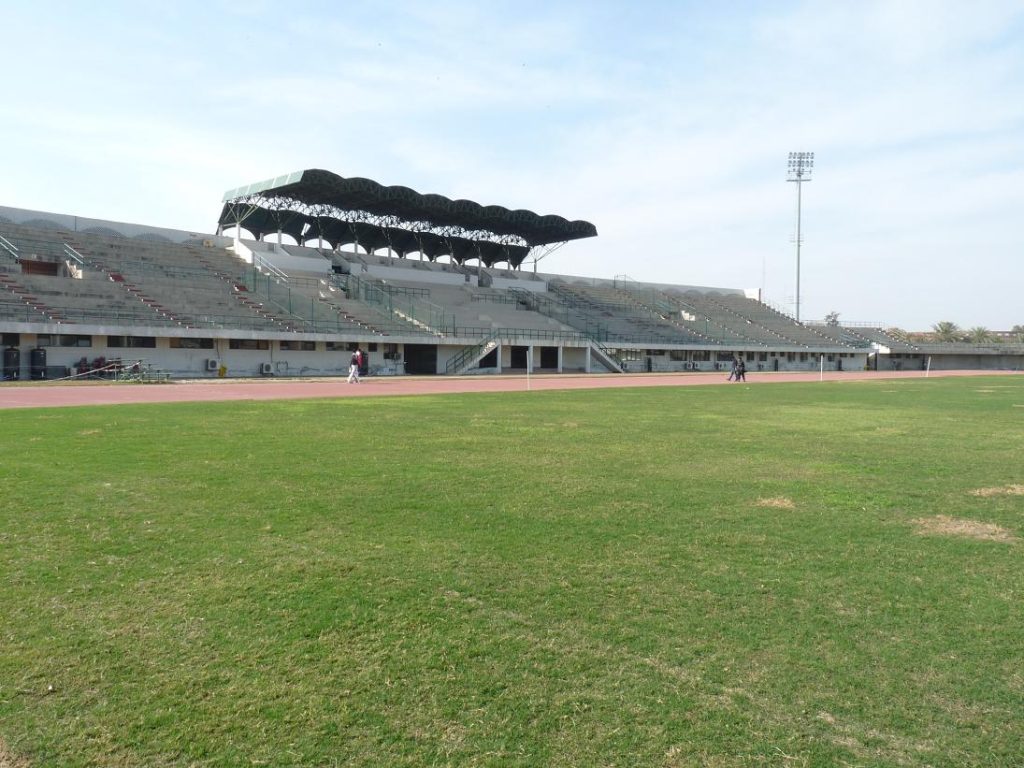In the bustling city of Lahore, mere meters from the iconic Gaddafi Stadium—currently being transformed into a world-class venue for the ICC Champions Trophy 2025—stands the Punjab Football Stadium, a haunting reminder of Pakistan’s apathy toward football.
As Gaddafi Stadium undergoes a stunning Rs. 7.7 billion ($27.5 million) facelift, with brand-new seating, state-of-the-art LED floodlights, and two massive digital screens, the neighboring Punjab Stadium remains a desolate shadow of its potential. Dust and debris from Gaddafi’s renovations settle on its crumbling infrastructure, amplifying the stark contrast between Pakistan’s cricket and football priorities.
A Tale of Two Stadiums
Owned and operated by the Pakistan Sports Board (PSB), the Punjab Football Stadium has long been neglected. Once envisioned as a multi-purpose venue and the home of Pakistan’s national football team, it now resembles a set from a post-apocalyptic movie.
The grass pitch is barren, the floodlights non-existent, and the seating—if you can even call it that—is in shambles. It’s a tragic sight, one that symbolizes the inefficiency and mismanagement that has plagued Pakistan’s football ecosystem.
Related: A Week of Chaos: Inside the PFF’s Battle with the PSB
For years, the PSB and the Pakistan Football Federation (PFF) have been locked in a seemingly endless blame game. Their disputes have not only hindered progress but also left football facilities across the country in a state of utter disrepair. Punjab Stadium is no exception—it stands as a testament to the consequences of failed governance.
Why Football Infrastructure Matters
The state of the Punjab Football Stadium raises a crucial question: Why is football infrastructure important?
While Pakistan’s cricket infrastructure receives significant attention and funding, football—a sport beloved by millions worldwide—remains an afterthought. Robust football infrastructure is the foundation for developing talent, attracting international matches, and fostering a vibrant football culture. Without proper facilities, young players are denied opportunities to train in professional environments, clubs struggle to host matches, and fans are left disheartened.
Football is the world’s most popular sport, offering immense potential for social and economic growth. Countries that invest in football infrastructure see benefits beyond the pitch—community engagement, international recognition, and even economic returns. Yet, Pakistan continues to overlook this potential goldmine.
Final Thoughts
As the government pours billions into upgrading cricket venues like Gaddafi Stadium, one can only hope they spare a fraction of that for football. Just a fraction of the Rs. 7.7 billion ($27.5 million) investment could revive the Punjab Football Stadium, giving Pakistan’s footballers and fans a reason to dream again.
Until then, the Punjab Stadium will continue to decay, a sad reminder of misplaced priorities. It’s time for policymakers to realize that Pakistan’s sporting future must include football—and that future begins with infrastructure.

